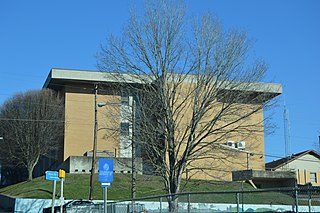
Jonesville is a town in and the county seat of Lee County, Virginia, United States. The population was 872 as of the 2020 census.

Woodlawn Cemetery is one of the largest cemeteries in New York City and a designated National Historic Landmark. Located south of Woodlawn Heights, Bronx, New York City, it has the character of a rural cemetery. Woodlawn Cemetery opened during the Civil War in 1863, in what was then Yonkers, in an area that was annexed to New York City in 1874. It is notable in part as the final resting place of some well-known figures.
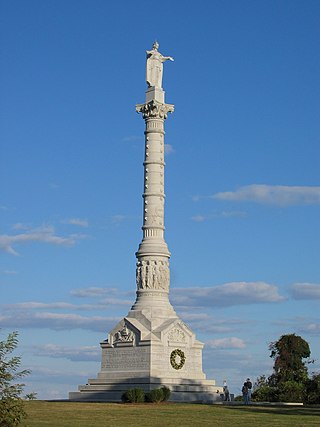
Colonial National Historical Park is a large national historical park located in the Hampton Roads region of Virginia operated by the National Park Service. It protects and interprets several sites relating to the Colony of Virginia and the history of the United States more broadly. These range from the site of the first English settlement at Jamestown, to the battlefields of Yorktown where the British Army was defeated in the American Revolutionary War. Over 3 million people visit the park each year.
Pfafftown is an unincorporated community in North Carolina, United States which has been partially annexed into the cities of Winston-Salem in Forsyth County and Lewisville, also in Forsyth County. As of the 2000 census, the ZCTA of Pfafftown had a population of 2,043. It is a Piedmont Triad community.
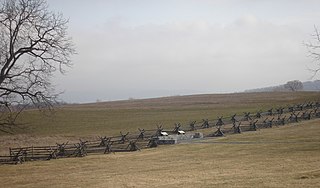
Antietam National Battlefield is a National Park Service-protected area along Antietam Creek in Sharpsburg, Washington County, northwestern Maryland. It commemorates the American Civil War Battle of Antietam that occurred on September 17, 1862.

This is intended to be a complete list of properties and districts listed on the National Register of Historic Places in Orleans County, New York. The locations of National Register properties and districts may be seen in a map by clicking on "Map of all coordinates". Two listings, the New York State Barge Canal and the Cobblestone Historic District, are further designated a National Historic Landmark.
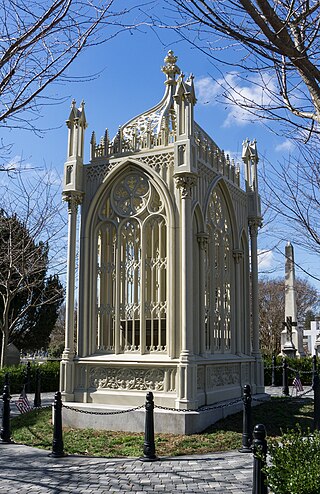
The James Monroe Tomb is the burial place of U.S. President James Monroe in Hollywood Cemetery, Richmond, Virginia, United States. The principal feature of the tomb is an architecturally unusual cast iron cage, designed by Albert Lybrock and installed in 1859 after Monroe's body was moved from Marble Cemetery in New York City. The tomb was declared a National Historic Landmark in 1971 for its unique architecture. To Richmonders it is colloquially known as The Birdcage.
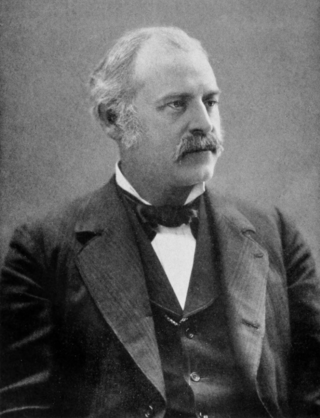
Andrew Jackson Warner, also known as A. J. Warner, was a prominent architect in Rochester, New York.

Douglaston Hill Historic District is a national historic district in Douglaston, Queens, New York. It includes 83 contributing buildings and two contributing sites. The buildings include Zion Episcopal Church (1830), houses and garages, and commercial buildings. The sites are Zion cemetery and public park. It was laid out with very large lots in 1853, at the very beginning of a movement in the United States to create suburban gardens. The buildings include a number of fine examples of late-19th- and early 20th-century architectural styles such as Queen Anne, Shingle Style, and Colonial Revival. The majority of the buildings date between 1890 and 1940.
Jonesville is a hamlet in Saratoga County, New York, United States.

The J.J. Deal and Son Carriage Factory, located at 117 West Street, was the largest factory built in Jonesville, Michigan and is the only 19th century factory remaining in the city. On August 1, 2012, the building was added to the National Register of Historic Places. In 2015, the building was redeveloped into the Heritage Lane Apartments.

The Blossom Hill and Calvary Cemeteries are a pair of adjacent municipally-owned cemeteries on North State Street in Concord, New Hampshire. Blossom Hill, a 19th-century cemetery designed in the then-fashionable rural cemetery tradition, was always a municipal cemetery; the Calvary Cemetery was established by the Roman Catholic Diocese of Manchester, whose oversight area includes all of New Hampshire. The Calvary Cemetery was taken over by the city in 1996; its earliest marked grave dates to 1857. The cemeteries were listed on the National Register of Historic Places in 2010.

The Agat World War II Amtrac is an underwater relic of World War II, located off Ga'an Point in Agat Bay on the west side of the island of Guam. It is the remains of an LVT 4, an amphibious tracked landing vehicle. It is located about 500 yards (460 m) off Agat Invasion Beach in 45 feet (14 m) of water, and was described as being in good condition when it was discovered and surveyed in 1985. These vehicles were used during the 1944 Battle of Guam, in which American forces recaptured the island from occupying Japanese forces. This particular vehicle does not appear to exhibit significant war damage. This is the most intact of the three Amtracks remaining on Guam from the 850 that participated in the battle. It was re-surveyed by maritime archaeological field schools conducted from 2009 to 2012.
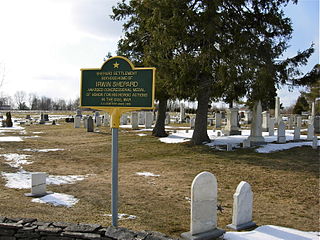
Shepard Settlement Cemetery is a historic cemetery located at Shepard Settlement, Onondaga County, New York. It was established about 1823, and remains an active burial ground containing approximately 500 burials. It is notable for including the graves of at least 30 veterans of all wars from the Revolutionary War to World War II. The gravestones are representative of typical funerary art of the mid-19th century.

Jonesville Store is a historic general store located at Jonesville, Saratoga County, New York. It was built about 1860, and expanded about 1900. It consists of a 2+1⁄2-story front block with a two-story rear block. The frame building is sheathed in clapboard and has a gable roof. It sits on a brick over limestone foundation. The three-bay front facade features a one-story full-width porch. The building once housed a store and post office, and remains a retail outlet and popular community gathering place.
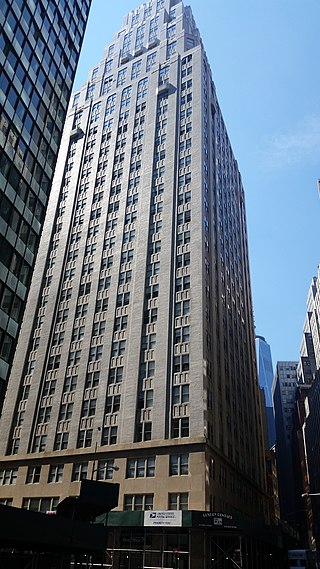
116 John Street is a historic office tower at the southwest corner of John Street and Pearl Street in the Financial District of Lower Manhattan in New York City. It was built in 1931, and is a 35-story brick and terra cotta building consisting of a three-story base, a 19-story shaft, and 12 upper stories that recede in a series of setbacks. The Louis Abramson designed building features Art Deco style design elements at the recessed entrances and in the lobby. Built as a speculative office building for insurance companies, the building interior was rehabilitated starting in 2011. Some floors had been converted to apartments by 2013.
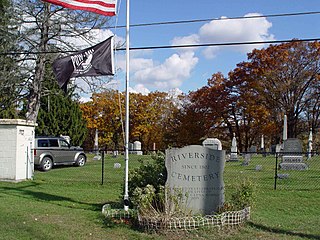
Riverside Cemetery is a historic cemetery located near Apalachin in Tioga County, New York. It was established in 1802, with late-19th century additions and an addition in 1939. It remains an active burial ground containing approximately 3,600 burials. It is the final resting place of many early settlers of the region. A set of stone entrance gates were installed in 1939. Notable burials include May Louise Davison Purple (1871-1957), wife of author Eugene Manlove Rhodes.
Pinckney Corners Cemetery is a historic cemetery located near Copenhagen in Lewis County, New York. It was established in 1810. It contains approximately 240 marked burials dating from 1810 to 1901. It is the final resting place of many early settlers of the region. Those buried include veterans of the Revolutionary War and the War of 1812.

Dunning Street Cemetery is a historic rural cemetery located at Malta, Saratoga County, New York. The cemetery was established about 1775, and incorporated by the Dunning Street Cemetery Association in 1908. It is the final resting place of many important early Malta residents, including veterans of American Revolutionary War and includes a number of notable examples of 19th century local funerary art. It remains an active burial ground.
Cuba Cemetery is a historic rural cemetery located at Cuba in Allegany County, New York. It was established in 1841, and later expanded and incorporated neighboring cemeteries. It includes 5,886 total interments as of late 2016 and remains an active burial ground. Located in the cemetery are the Gothic Revival style vault (1914) and McKee mausoleum (1875). Another notable feature is the Green mausoleum (1925).




















